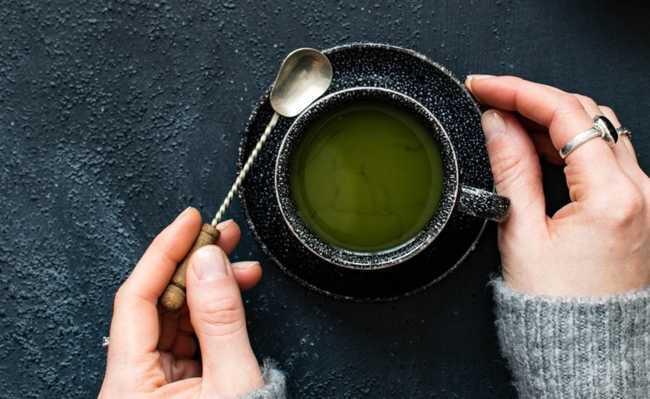Heat? Find out how to refresh your home environment
Check out tips to cheaply and sustainably refresh your home

Edited and resized image by Ana Paula Izurieta, available on Unsplash
Knowing how to cool the environment at home is a great way to avoid some discomfort, such as heat allergy. Sometimes the heat arrives without mercy and we have no alternative, we frantically search for different ways to fight it. Unfortunately, these modes often include excessive use of water and energy, which harms the environment, as stated in the article "Do you know what a water footprint is? It has to do with direct and indirect consumption of water."
The heat bothers everyone. So it's worth the home environment, to make it more pleasant. Below, we present a set of tips on how to refresh your home environment to make it cooler during hot days without harming the environment or your pocket. Check it out below:
Invest in light colors and finer fabrics
Dark colors and thick fabrics in summer can cause some discomfort by retaining heat. Therefore, if possible, replace furry rugs in dark or strong colors with short yarn and pastel colored pieces. Eliminate dark colors from the walls, giving preference also to light and pastel tones. If you have a sofa with heavy fabric like velvet and suede, try covering it with light cloth covers like cotton and linen - the same goes for pillows. Put aside the sofa blankets during the hottest days.
These small measures can greatly improve quality and comfort at home without increasing energy or water consumption. And, who knows, it may help to alleviate the symptoms of those who have a heat allergy.Prefer cold lamps

Edited and resized image by Taofeek Obafemi-Babatunde, is available on Unsplash
- Blue light: what is it, benefits, damages and how to deal
It may not seem like it, but using the wrong light can increase the heat in your home. If you still have an incandescent (hot) light, now is a good time to replace it with a fluorescent (white) one, which is more economical and heats less. If you want to become even more sustainable, switch to an LED light, which is cool, economical and recyclable.
Adjust your furniture and space
The best solution is always the one that is effective and doesn't require anything out of your pocket. On top of that, this tip is simple: move your furniture around. The excess of objects makes the spaces more stuffy. So, on hot days, remove blankets, rugs, pillows, lamps, stuffed animals, wooden items and try to spread more mirrors and vases around the house.
- Online course: sustainable architecture in practice: you learn, get the step-by-step guide and implement the strategies in practice
have plants and sources

Edited and resized image of Sarah Dorweiler is available on Unsplash
Put your gardening gloves and hat on and get down to business - or in the dirt, as the case may be. Plants are great for dampness in an environment and help to lower the temperature. But beware! Do not use very large plants in small places, this will make the place more stuffy. But if they're the right size, having plants indoors keep the environment moist and help lower the indoor temperature. Read more about which plants are best for each room in the house.
Another tip is to put fonts from feng shui through the house. They help make the house more humid and more pleasant on the hottest days. If you don't like fountains so much, the tip also works with other decorative items that include water, even potted water plants, if you are one of those who like little fish and don't want to see them confined (but beware of the proliferation of mosquitoes).
Leave curtains or blinds closed

Stock Image Snap by Pixabay
Curtains or blinds help prevent overheating in the home by blocking direct sunlight. If you are doing home renovations, it would be nice to install a smoked film (known as insulfilm) on windows where more sunlight enters, as the film rejects 79% of the heat brought by the sun's rays. You can be even more extreme, and if your walls are already full of holes, you might want to install your windows facing east, so that the rays only come in during the morning.
Keep the night air fresh for a longer time
As soon as the sun goes down, open all the doors and windows in the rooms (if safe) and let the air flow through the house. Before daybreak, close them again. During the night, the air is usually less stuffy compared to the day. The ideal is to try to keep this freshness longer. This way you avoid the heat, which can help to alleviate the symptoms of heat allergy. But it is necessary to be aware of the entry of insects and, if necessary, know how to kill mosquitoes in a natural way.
Adjust your ceiling fan
Your ceiling fan can be adjusted according to the season. I bet you didn't know about this one, huh? Adjust it so that the propellers rotate counterclockwise. By doing this in summer, the hottest time of the year, you will set your fan at a higher speed, the airflow produced will create a refreshing breeze for you and your guests.
moisten the air
If plants and fountains aren't your thing, there are other options for humidifying the air at home and refreshing the environment without wasting too much energy on humidifiers or air conditioners. Place containers full of fresh water in each room in the house (it can be under the bed or sofa), remembering that it is important to keep an eye on dengue outbreaks (add some thyme essential oil to flavor and fight mosquito larvae Aedes aegypti, if it appears). Understand this theme better in the article: "Thyme essential oil and corn starch fight mosquito larvae Aedes aegypti". If you have small children in the house and you don't want an accident, spread wet bath towels around the house.
- Thyme: know how to use it and enjoy its benefits
condition the air
Air conditioners are expensive on their own, not to mention the energy bill that follows their use. But fear not, there are other solutions. Condition the air yourself! That's right, to condition the air, just place a frozen water bottle in front of a fan turned on. This will help circulate cool air around the room without the need for an air conditioner. In addition to being convenient for your pocket, it's good for the environment too.
Have a refreshing diet
It's important to hydrate, especially in summer. Water helps regulate body temperature. In addition to drinking (lots!) of water, it is good to avoid drinking alcoholic beverages and caffeine, as they are diuretic drinks that can facilitate dehydration. Eat light meals with large portions of seasonal fruits and vegetables (look for local produce and become a locávore!). Avoid ingesting proteins as they speed up metabolism, which in turn increases your body temperature. Signs such as headaches, confusion, dizziness and vomiting can all be symptoms of dehydration. But remember: refreshing your home environment is an important step to avoid these nuisances.

Stock Image Snap by Pixabay










